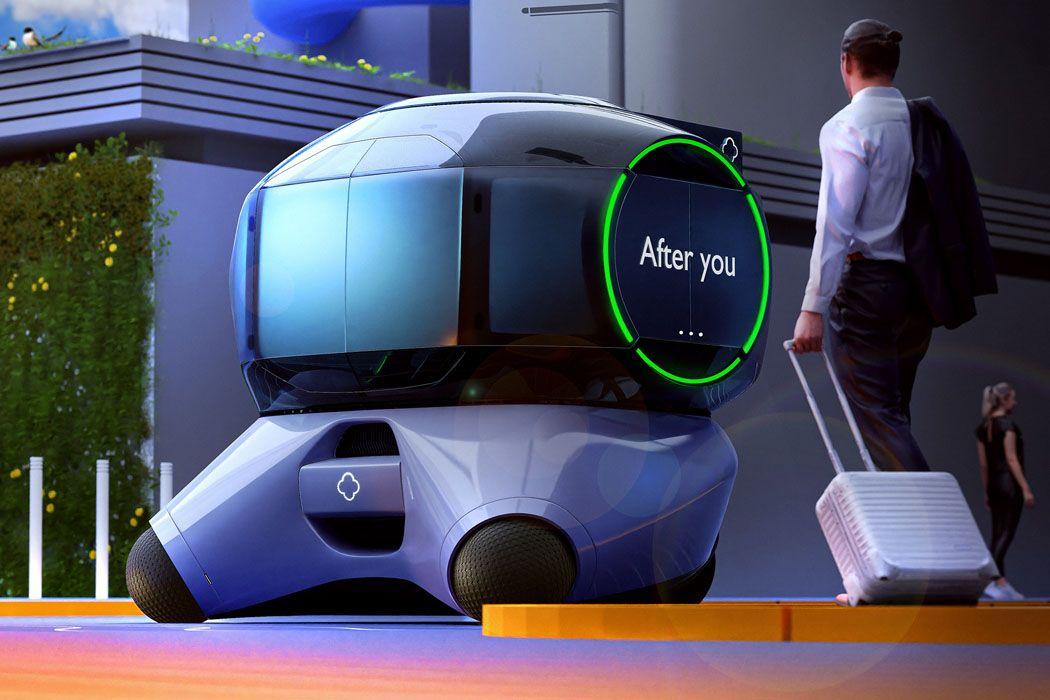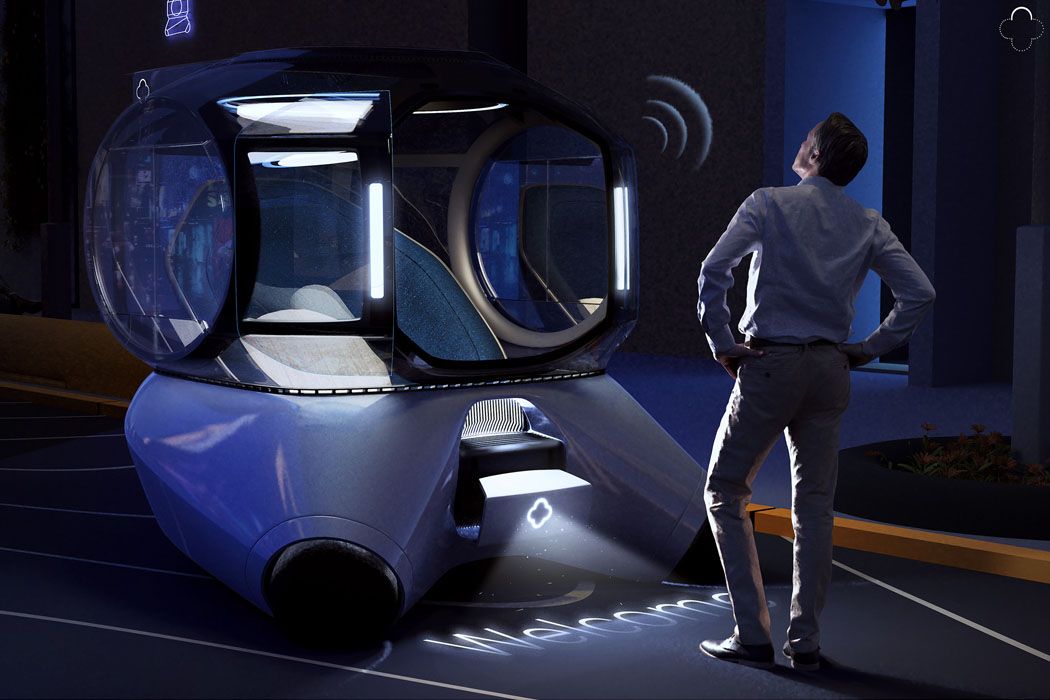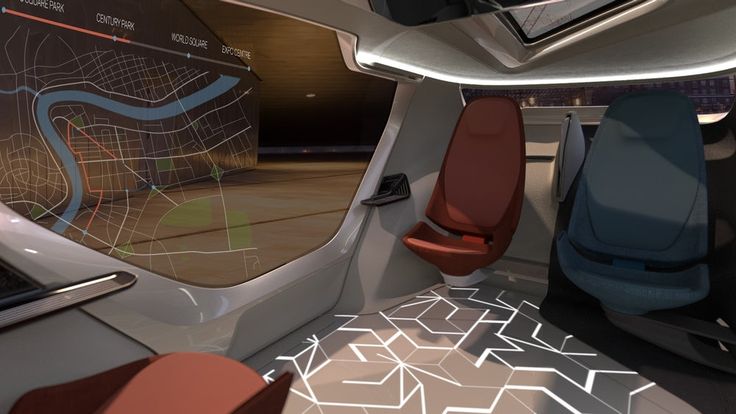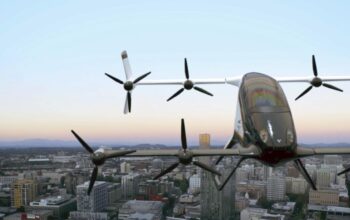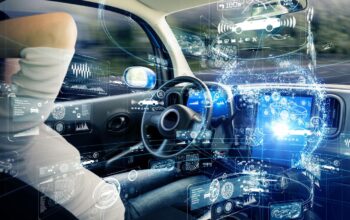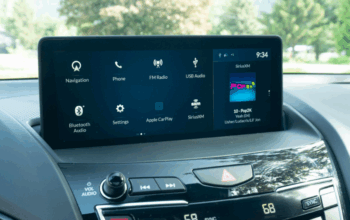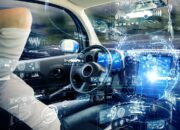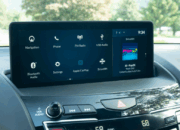The way we move from point A to point B is on the cusp of an unprecedented transformation, largely driven by the relentless advancement of autonomous technology. What once seemed like science fiction—vehicles navigating roads without human intervention—is rapidly becoming a tangible reality. This isn’t merely an incremental improvement; it’s a fundamental shift poised to redefine everything from urban planning and personal freedom to road safety and economic landscapes. This article will explore in depth how autonomous tech is revolutionizing commuting, dissecting its core components, the profound benefits it promises, the significant challenges it faces, and the exciting trajectory of its future development.
The Dawn of Driverless Mobility
For centuries, the act of driving has been synonymous with personal control and human skill. However, with the advent of sophisticated sensors, artificial intelligence (AI), and powerful computing, machines are increasingly capable of replicating, and in some cases surpassing, human driving capabilities. The journey towards full autonomy is typically categorized into different levels, as defined by the Society of Automotive Engineers (SAE):
A. Level 0: No Automation: The human driver performs all driving tasks. B. Level 1: Driver Assistance: The vehicle has either steering or acceleration/deceleration support, but not both simultaneously. Examples include adaptive cruise control or lane-keeping assist. C. Level 2: Partial Automation: The vehicle can control both steering and acceleration/deceleration, but the human driver must remain engaged and monitor the environment. This includes features like “hands-on” advanced driver-assistance systems (ADAS) where the driver’s hands must be on the wheel. D. Level 3: Conditional Automation: The vehicle can perform all driving tasks under certain conditions, but the human driver must be ready to take over when prompted by the system. The system can handle “eyes off” driving in specific environments, like highways. E. Level 4: High Automation: The vehicle can perform all driving tasks and monitor the driving environment under specific conditions (e.g., within a geofenced area or specific road types). The human driver is not required to take over in these conditions, but the system may still be limited to certain operational design domains (ODDs). F. Level 5: Full Automation: The vehicle can perform all driving tasks under all road conditions and environmental circumstances. No human intervention is required at any time. This is truly “driverless” operation.
Currently, most advanced commercially available vehicles operate at Level 2, with some manufacturers cautiously rolling out Level 3 capabilities in limited scenarios. The push towards Levels 4 and 5 is where the true revolution lies, promising a complete reimagining of the commuting experience.
Core Technologies Powering Autonomous Vehicles
The sophistication of autonomous tech is a symphony of interconnected systems working in harmony. Each component plays a critical role in allowing a vehicle to perceive its surroundings, process information, make decisions, and execute actions safely and efficiently.
A. Sensors: The Eyes and Ears of the Vehicle
Autonomous vehicles rely on a diverse array of sensors to build a comprehensive understanding of their environment. No single sensor type is sufficient, as each has strengths and weaknesses in different conditions.
- Cameras: Provide rich visual information, allowing for lane detection, traffic sign recognition, pedestrian identification, and object classification. They are crucial for understanding traffic lights and contextual cues. However, their performance can degrade in poor lighting, heavy rain, or fog.
- Radar (Radio Detection and Ranging): Emits radio waves and measures the time it takes for them to return, allowing it to determine the distance, speed, and direction of objects. Radar excels in adverse weather conditions where cameras struggle. It’s particularly good for detecting vehicles and large objects.
- Lidar (Light Detection and Ranging): Uses pulsed laser light to measure distances, creating highly accurate 3D maps of the vehicle’s surroundings. Lidar provides superior spatial resolution, crucial for precise localization and obstacle avoidance. Its performance can be affected by heavy rain or snow.
- Ultrasonic Sensors: These short-range sensors use sound waves to detect nearby objects, primarily used for parking assistance, blind-spot monitoring, and low-speed maneuvers. They are cost-effective but have limited range.
- GPS (Global Positioning System) and HD Maps: GPS provides approximate global positioning, but for precise lane-level accuracy, autonomous vehicles rely on high-definition (HD) maps. These maps contain extremely detailed information about road markings, traffic signs, lane geometry, and even surrounding infrastructure, updated continuously.
B. Artificial Intelligence and Machine Learning: The Brain
The vast amount of data collected by sensors is fed into the vehicle’s “brain” – a powerful computing platform running advanced AI and machine learning (ML) algorithms. This is where perception, prediction, and decision-making occur.
- Perception: AI algorithms process sensor data to identify and classify objects (e.g., cars, pedestrians, cyclists, traffic cones), estimate their speed and trajectory, and track their movement.
- Prediction: ML models analyze historical data and current trajectories to predict the likely future behavior of other road users and dynamic elements in the environment. This is critical for safe maneuvering.
- Decision-Making and Path Planning: Based on perceived reality and predicted outcomes, AI determines the optimal driving actions – accelerating, braking, steering, changing lanes, or stopping. It continuously plans and adjusts the vehicle’s path to reach its destination safely and efficiently. This involves complex algorithms that weigh safety, comfort, and efficiency.
C. Connectivity (V2X): The Communication Network
While a vehicle can operate autonomously based on its onboard sensors, connectivity greatly enhances its capabilities and safety. Vehicle-to-Everything (V2X) communication allows vehicles to exchange information with their surroundings.
- Vehicle-to-Vehicle (V2V): Vehicles share data directly with each other (e.g., speed, position, braking events), enabling early warning of hazards and cooperative maneuvering.
- Vehicle-to-Infrastructure (V2I): Vehicles communicate with roadside units (e.g., traffic lights, road sensors) to receive real-time information about traffic conditions, road closures, and optimal speeds.
- Vehicle-to-Network (V2N): Vehicles connect to cloud services for map updates, over-the-air (OTA) software updates, route optimization, and remote diagnostics.
- Vehicle-to-Pedestrian (V2P): Potentially, vehicles could communicate with smartphones or wearable devices carried by pedestrians and cyclists to enhance safety.
V2X connectivity promises to create a highly collaborative and informed driving environment, significantly improving efficiency and safety beyond what individual vehicles can achieve in isolation.
The Transformative Benefits for Commuting
The widespread adoption of autonomous vehicles (AVs) is poised to bring about profound benefits that will reshape our daily commutes and, by extension, society as a whole.
A. Enhanced Safety: Reducing Human Error
Human error is a contributing factor in over 90% of all road accidents. Autonomous vehicles, driven by algorithms and precise sensors, have the potential to drastically reduce this figure.
- Elimination of Distraction: AVs don’t get distracted by phones, conversations, or fatigue.
- Consistent Adherence to Rules: They strictly follow speed limits, traffic laws, and road signs.
- Faster Reaction Times: Sensors and AI can often react faster and more consistently than humans in critical situations.
- 360-Degree Awareness: Unlike humans with limited fields of vision, AVs have a complete, continuous view of their surroundings.
- Reduced Impaired Driving: Eliminates accidents caused by driving under the influence of alcohol or drugs.
The promise of fewer collisions, injuries, and fatalities is perhaps the most compelling argument for autonomous tech.
B. Increased Efficiency and Reduced Congestion
Autonomous vehicles can communicate with each other and infrastructure, leading to a more optimized and efficient flow of traffic.
- Optimized Traffic Flow: AVs can maintain consistent speeds and closer following distances, potentially increasing road capacity without building new lanes. They can also coordinate at intersections.
- Reduced Idling and Braking: Smooth, predictable driving reduces stop-and-go traffic, leading to lower fuel consumption (or energy use for EVs) and fewer emissions.
- Optimized Routing: AI-powered navigation can dynamically adjust routes in real-time based on traffic conditions, further minimizing travel times.
- Automated Parking: Vehicles can drop off passengers and then find parking autonomously, reducing urban congestion caused by drivers searching for spots.
This translates to shorter commute times, less wasted fuel, and a more pleasant travel experience.
C. Unlocked Productivity and Leisure Time
One of the most immediate and tangible benefits for individual commuters is the ability to reclaim the time currently spent driving.
- Productive Commutes: Instead of focusing on the road, commuters can work, hold virtual meetings, read, or catch up on emails.
- Leisure and Relaxation: Passengers can use travel time for entertainment, relaxation, or spending quality time with family.
- Reduced Stress: The mental burden and stress associated with navigating traffic are significantly alleviated.
This reclaimed time has immense economic and personal value, transforming a previously unproductive part of the day into an opportunity.
D. Enhanced Mobility and Inclusivity
Autonomous vehicles have the potential to profoundly impact individuals who currently face mobility challenges.
- Elderly and Disabled Individuals: Those unable to drive due to age, disability, or medical conditions can regain independence and access to transportation.
- Children and Non-Drivers: Safe, reliable transportation becomes accessible to a broader demographic.
- Rural and Underserved Areas: Autonomous ride-sharing services could provide cost-effective transportation options where public transit is limited.
This increased accessibility can foster greater social inclusion and economic opportunity for millions.
E. Economic and Societal Impacts
Beyond individual benefits, the ripple effects of autonomous tech will be felt across various sectors.
- Real Estate: Reduced need for parking spaces could free up valuable urban land for other uses, potentially lowering housing costs and enabling new urban designs.
- Logistics and Delivery: Autonomous trucks and delivery vehicles can operate 24/7, improving supply chain efficiency and reducing transportation costs.
- Insurance Industry: A significant reduction in accidents will necessitate a re-evaluation of insurance models and premiums.
- New Business Models: The rise of robotaxis and mobility-as-a-service (MaaS) platforms will create entirely new industries and job categories.
- Environmental Benefits: Combined with electric propulsion, autonomous vehicles can significantly reduce carbon emissions and air pollution, especially in urban areas.
Significant Challenges on the Road to Full Autonomy
Despite the immense promise, the path to widespread autonomous vehicle adoption is fraught with significant technical, ethical, regulatory, and societal challenges.
A. Technical Complexities and Edge Cases
While AVs are adept at handling routine driving scenarios, the sheer complexity of real-world environments presents formidable technical hurdles.
- Unpredictable Human Behavior: Humans are inherently unpredictable. Pedestrians crossing against lights, sudden lane changes, or aggressive driving present complex challenges for AV algorithms.
- Adverse Weather Conditions: Heavy rain, snow, fog, and ice can severely impede sensor performance (especially cameras and Lidar), making it difficult for the vehicle to perceive its surroundings accurately.
- Unusual Road Conditions: Unmarked construction zones, faded lane markings, temporary detours, or sudden debris on the road can confuse current systems.
- “Edge Cases”: These are rare but critical situations that are difficult to anticipate and program for, such as a child chasing a ball into the street, an animal darting out, or unusual road signs. Training AI for every conceivable edge case is an enormous task.
- Cybersecurity: Autonomous vehicles are highly connected computers on wheels, making them vulnerable to cyberattacks that could compromise safety, privacy, or system integrity. Robust cybersecurity measures are paramount.
B. Regulatory and Legal Frameworks
Existing traffic laws and legal frameworks were designed for human drivers. The introduction of AVs necessitates a complete overhaul of these regulations.
- Liability in Accidents: Who is at fault when an autonomous vehicle is involved in a collision – the vehicle owner, the manufacturer, the software provider, or the sensor supplier? Clear legal precedents are needed.
- Certification and Testing: Establishing rigorous and standardized testing and certification processes for AVs before they can be deployed widely is critical for public trust.
- Data Privacy: AVs collect vast amounts of data about their surroundings and occupants. Regulations are needed to protect this sensitive information.
- Cross-Border Harmonization: Different countries and even different states within a country may have varying regulations, creating complexities for AV manufacturers and operators.
C. Ethical Dilemmas
Autonomous vehicles may encounter situations where they must make difficult ethical choices, often involving prioritizing different lives.
- The “Trolley Problem”: If an autonomous vehicle is in an unavoidable crash, should it prioritize the lives of its occupants, pedestrians, or other road users? Programming these ethical decisions is a profound challenge.
- Risk Aversion vs. Utility: Should an AV be programmed to be maximally safe, even if it means driving extremely slowly and impeding traffic flow, or should it balance safety with efficiency?
- Bias in AI: If the training data for AI algorithms is biased (e.g., disproportionately representing certain demographics or environments), the AV’s performance or decision-making could be inadvertently biased against certain groups.
These are not just technical problems but societal questions that require broad public discourse and consensus.
D. Public Acceptance and Trust
Perhaps one of the biggest hurdles is gaining widespread public acceptance and trust in autonomous technology.
- Fear of the Unknown: Many people are naturally apprehensive about relinquishing control to a machine, especially when it comes to their safety.
- Media Portrayal: Every autonomous vehicle incident, no matter how minor, tends to garner significant media attention, which can erode public confidence.
- Job Displacement: Concerns exist about the potential impact on jobs in industries like trucking, taxi services, and delivery, leading to societal resistance.
- Perceived Loss of Control: For many, driving is a source of freedom and enjoyment. The idea of not driving can be met with resistance.
Building trust will require a track record of proven safety, transparent communication, and effective public education campaigns.
E. Infrastructure Requirements
While AVs can operate on existing roads, specialized infrastructure could significantly enhance their capabilities and accelerate adoption.
- Smart Roadways: Roads equipped with sensors, communication beacons, and charging infrastructure can provide real-time data to AVs and support efficient platooning (closely following vehicles).
- High-Bandwidth Connectivity: Reliable, high-speed 5G networks are crucial for V2X communication and over-the-air updates.
- Digital Mapping and Updates: Maintaining highly accurate and up-to-date HD maps is a continuous and resource-intensive task.
The Road Ahead: Future Trends and Evolution
The development of autonomous tech is dynamic and multifaceted, with several key trends shaping its future trajectory.
A. Convergence with Electric Vehicles (EVs)
The future of personal mobility is widely seen as being both electric and autonomous. EVs offer a cleaner, quieter, and often simpler platform for integrating autonomous hardware and software due to their electronic control systems and fewer moving parts compared to internal combustion engines. This synergy will accelerate the transition to sustainable and intelligent transportation.
B. Mobility-as-a-Service (MaaS) and Robotaxis
The concept of car ownership may diminish, especially in urban areas, as Mobility-as-a-Service (MaaS) gains traction. Instead of owning a personal vehicle, individuals will subscribe to services that offer seamless access to various transportation modes, including autonomous robotaxis.
- On-Demand Transportation: Summoning an autonomous vehicle via an app, much like current ride-hailing, but without a human driver.
- Optimized Fleet Management: Fleets of robotaxis can be centrally managed and optimized for efficiency, reducing vehicle idle time and maximizing utilization.
- Reduced Need for Parking: Less privately owned vehicles means less demand for vast parking lots, freeing up valuable urban space.
MaaS powered by autonomous tech promises a more efficient, affordable, and accessible urban transportation system.
C. Specialized Autonomous Applications
Beyond passenger vehicles, autonomous technology is finding applications in various specialized domains:
- Autonomous Last-Mile Delivery: Small autonomous robots or vehicles delivering packages, groceries, or food to doorsteps, particularly in urban and suburban areas.
- Autonomous Commercial Trucks: Long-haul trucking can benefit immensely from automation, addressing driver shortages, improving safety, and enabling 24/7 operations.
- Autonomous Public Transit: Driverless shuttles and buses operating on fixed routes or within geofenced areas can enhance public transportation efficiency and reach.
- Autonomous Agriculture: Self-driving tractors and harvesters are already transforming farming, increasing efficiency and precision.
- Autonomous Construction: Heavy machinery operating autonomously can improve safety and productivity on construction sites.
D. Enhanced Human-Machine Interaction (HMI)
As AVs become more capable, the interface between the human and the machine will become increasingly sophisticated and intuitive.
- Clear Communication: AVs will need to clearly communicate their intentions to occupants, pedestrians, and other drivers (e.g., via external light signals, internal displays).
- Seamless Handover: For Level 3 systems, the transition of control between the vehicle and the human driver must be seamless, intuitive, and safe.
- Personalized Experiences: AI-powered systems will learn passenger preferences for routing, entertainment, and climate control, offering a highly personalized commuting experience.
E. The Role of Regulations and Policy
The pace of autonomous tech adoption will heavily depend on how quickly and effectively governments establish clear, consistent, and adaptable regulatory frameworks. Collaboration between industry, academia, and policymakers will be crucial to foster innovation while ensuring public safety. International harmonization of standards will also be vital for global deployment.
Conclusion
The revolution ignited by autonomous technology extends far beyond simply taking the wheel out of human hands. It promises a future where commuting is safer, more efficient, more accessible, and more productive. While the technical, ethical, and societal challenges are significant, the relentless progress in AI, sensor technology, and connectivity paints a clear picture: our daily commute, and indeed our relationship with mobility, is on the cusp of an extraordinary transformation.
As autonomous vehicles move from limited trials to widespread adoption, they will profoundly reshape urban landscapes, catalyze new economic opportunities, and fundamentally alter how we perceive and utilize travel time. The journey to full autonomy is complex and iterative, but the destination—a world where transport is seamless, safe, and truly smart—is compelling enough to drive continuous innovation and investment. The road ahead is not just about driving; it’s about unlocking a new era of human potential and societal benefit.

